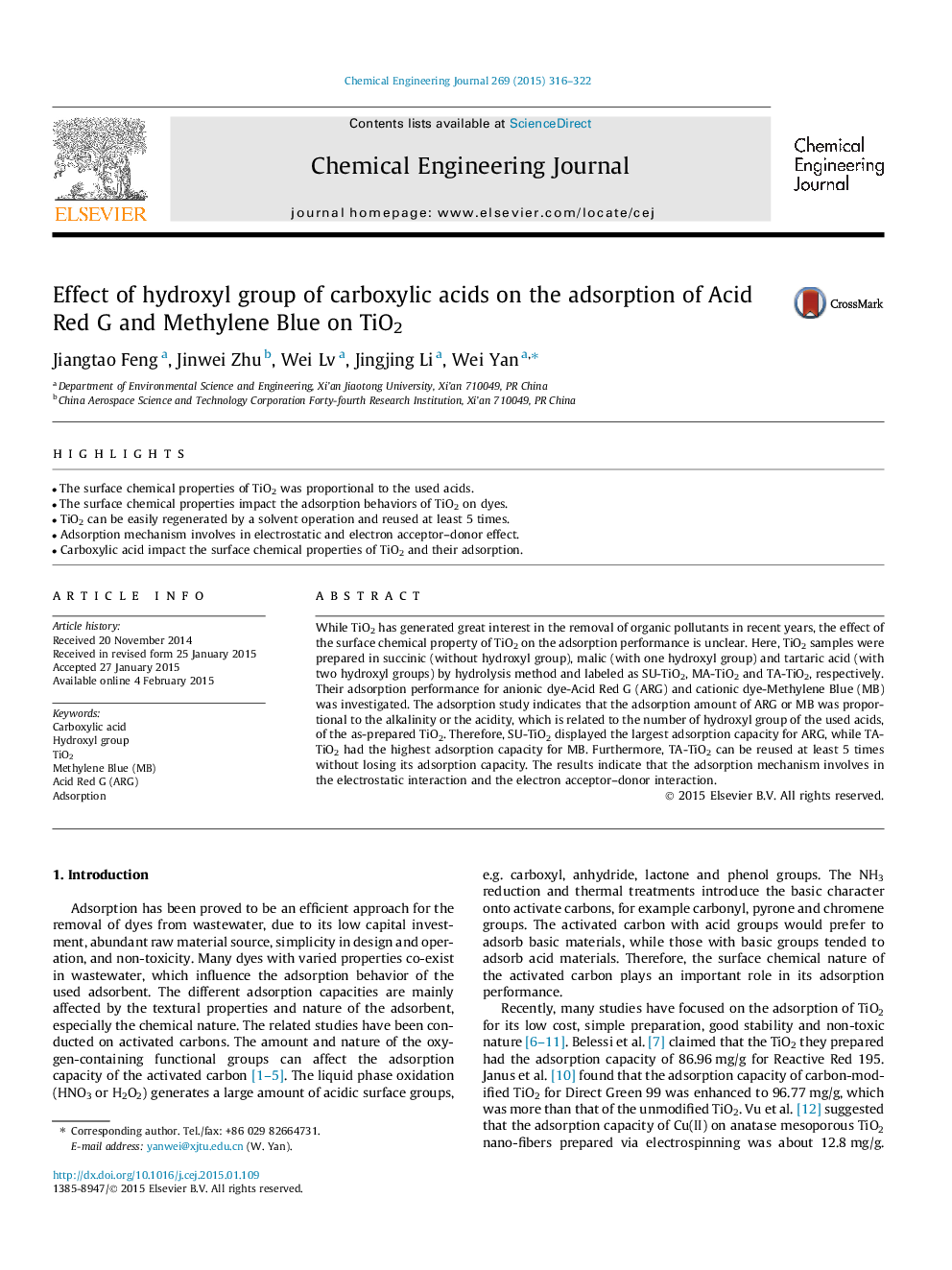| کد مقاله | کد نشریه | سال انتشار | مقاله انگلیسی | نسخه تمام متن |
|---|---|---|---|---|
| 146528 | 456372 | 2015 | 7 صفحه PDF | دانلود رایگان |

• The surface chemical properties of TiO2 was proportional to the used acids.
• The surface chemical properties impact the adsorption behaviors of TiO2 on dyes.
• TiO2 can be easily regenerated by a solvent operation and reused at least 5 times.
• Adsorption mechanism involves in electrostatic and electron acceptor–donor effect.
• Carboxylic acid impact the surface chemical properties of TiO2 and their adsorption.
While TiO2 has generated great interest in the removal of organic pollutants in recent years, the effect of the surface chemical property of TiO2 on the adsorption performance is unclear. Here, TiO2 samples were prepared in succinic (without hydroxyl group), malic (with one hydroxyl group) and tartaric acid (with two hydroxyl groups) by hydrolysis method and labeled as SU-TiO2, MA-TiO2 and TA-TiO2, respectively. Their adsorption performance for anionic dye-Acid Red G (ARG) and cationic dye-Methylene Blue (MB) was investigated. The adsorption study indicates that the adsorption amount of ARG or MB was proportional to the alkalinity or the acidity, which is related to the number of hydroxyl group of the used acids, of the as-prepared TiO2. Therefore, SU-TiO2 displayed the largest adsorption capacity for ARG, while TA-TiO2 had the highest adsorption capacity for MB. Furthermore, TA-TiO2 can be reused at least 5 times without losing its adsorption capacity. The results indicate that the adsorption mechanism involves in the electrostatic interaction and the electron acceptor–donor interaction.
Journal: Chemical Engineering Journal - Volume 269, 1 June 2015, Pages 316–322